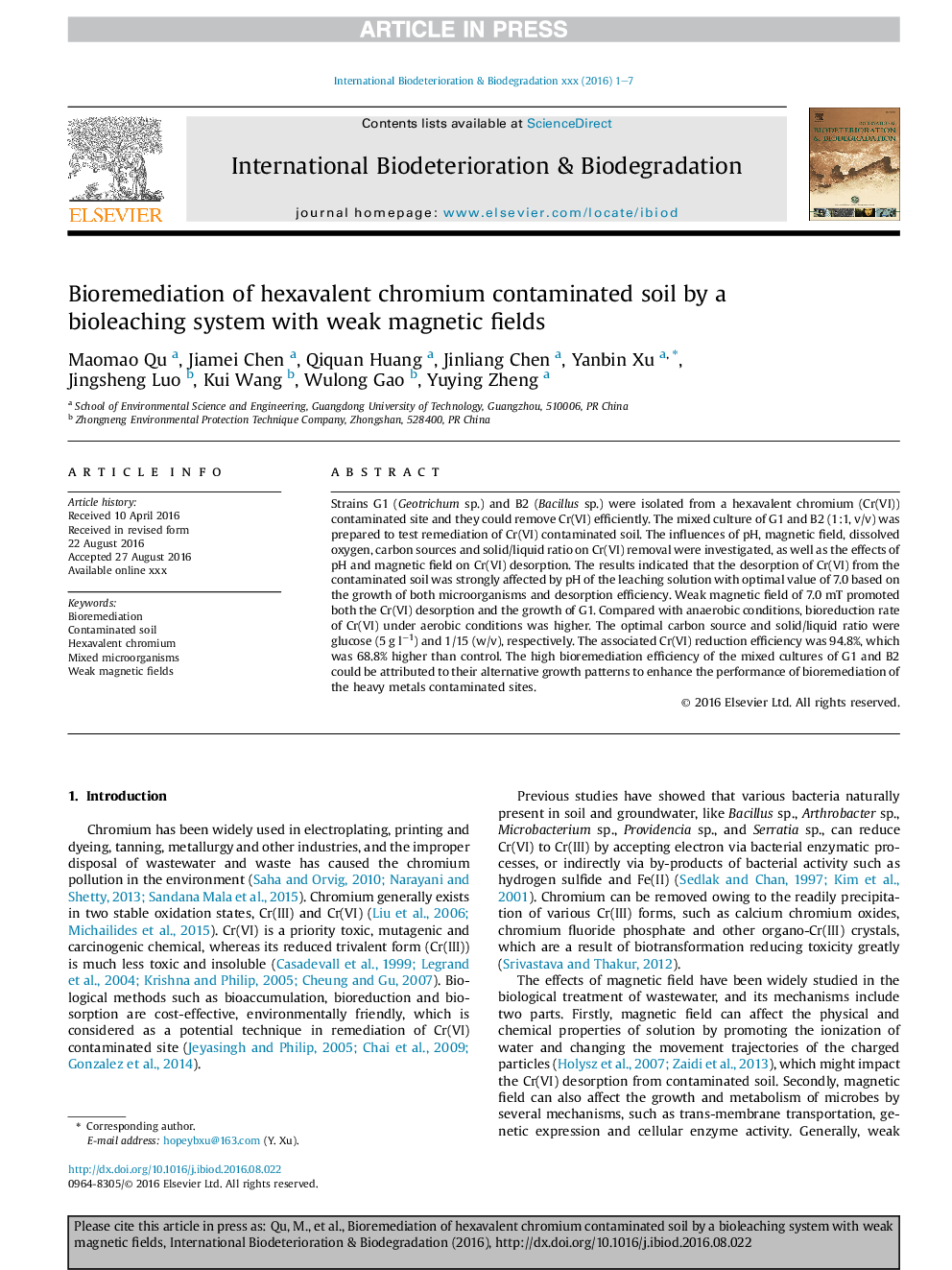| Article ID | Journal | Published Year | Pages | File Type |
|---|---|---|---|---|
| 8843883 | International Biodeterioration & Biodegradation | 2018 | 7 Pages |
Abstract
Strains G1 (Geotrichum sp.) and B2 (Bacillus sp.) were isolated from a hexavalent chromium (Cr(VI)) contaminated site and they could remove Cr(VI) efficiently. The mixed culture of G1 and B2 (1:1, v/v) was prepared to test remediation of Cr(VI) contaminated soil. The influences of pH, magnetic field, dissolved oxygen, carbon sources and solid/liquid ratio on Cr(VI) removal were investigated, as well as the effects of pH and magnetic field on Cr(VI) desorption. The results indicated that the desorption of Cr(VI) from the contaminated soil was strongly affected by pH of the leaching solution with optimal value of 7.0 based on the growth of both microorganisms and desorption efficiency. Weak magnetic field of 7.0 mT promoted both the Cr(VI) desorption and the growth of G1. Compared with anaerobic conditions, bioreduction rate of Cr(VI) under aerobic conditions was higher. The optimal carbon source and solid/liquid ratio were glucose (5 g lâ1) and 1/15 (w/v), respectively. The associated Cr(VI) reduction efficiency was 94.8%, which was 68.8% higher than control. The high bioremediation efficiency of the mixed cultures of G1 and B2 could be attributed to their alternative growth patterns to enhance the performance of bioremediation of the heavy metals contaminated sites.
Related Topics
Life Sciences
Environmental Science
Environmental Science (General)
Authors
Maomao Qu, Jiamei Chen, Qiquan Huang, Jinliang Chen, Yanbin Xu, Jingsheng Luo, Kui Wang, Wulong Gao, Yuying Zheng,
